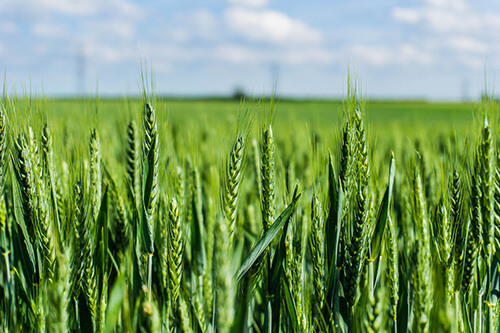Tips for Cover Crops
Sep 07, 2020

It’s time to start thinking about cover crops. Have you thought of what cover crop you are going to do this fall/winter? If not, this article will shed a little light on some of the cover crops that are good to use in vegetable production.
A cover crop is planted to cover the soil when it would otherwise sit fallow. It is also not planted to be harvested and sold, but used for the effects they have on the next vegetable crop by improving soil health which results in healthier vegetable crop.
A cover crop choice is important because different species provide different benefits. For example, small grains such as barley, oat, rye, triticale, and winter wheat may provide biomass for building soil, organic matter, and weed suppression. Some crops may also have allelopathic effects, where chemicals produced by the cover crop inhibit growth of other plants. This can be beneficial for weed control, but may be detrimental to small seeded vegetable crops that are direct sown within two weeks after the cover crop is killed. Legumes such as crimson clover, ladino white clover, red clover, hairy vetch, and winter pea are known for building nitrogen in the soil.
Farmers that have used cover crops during drought years have seen a significant increase in yields compared to ground that did not have cover crops. In flood prone areas farmers have also seen organic matter such as corn and bean stalks do not wash and the erosion on the overall field had decreased in areas where cover crops were in place.
Cover crops can contribute to subsequent cash crops management, fertility, and crop health. They provide multiple benefits that promote healthy soils. Organic matter additions from cover crops are key to improving the physical, biological, and chemical properties of the soil.
Cover crops could play a role in making next year’s crop even better so consider planting cover crops if you are not already. If you are not sure what to plant, contact your local co-op agronomist and they can help you make those decisions.
Here are some common mixes for Tennessee and other helpful tips when considering cover crops.
Common Mixes for Our Area
Benefits of cover crops
Importance of organic matter
Nutrient cycling
Water dynamics
Other effects of soil organic matter
Structure
A cover crop is planted to cover the soil when it would otherwise sit fallow. It is also not planted to be harvested and sold, but used for the effects they have on the next vegetable crop by improving soil health which results in healthier vegetable crop.
A cover crop choice is important because different species provide different benefits. For example, small grains such as barley, oat, rye, triticale, and winter wheat may provide biomass for building soil, organic matter, and weed suppression. Some crops may also have allelopathic effects, where chemicals produced by the cover crop inhibit growth of other plants. This can be beneficial for weed control, but may be detrimental to small seeded vegetable crops that are direct sown within two weeks after the cover crop is killed. Legumes such as crimson clover, ladino white clover, red clover, hairy vetch, and winter pea are known for building nitrogen in the soil.
Farmers that have used cover crops during drought years have seen a significant increase in yields compared to ground that did not have cover crops. In flood prone areas farmers have also seen organic matter such as corn and bean stalks do not wash and the erosion on the overall field had decreased in areas where cover crops were in place.
Cover crops can contribute to subsequent cash crops management, fertility, and crop health. They provide multiple benefits that promote healthy soils. Organic matter additions from cover crops are key to improving the physical, biological, and chemical properties of the soil.
Cover crops could play a role in making next year’s crop even better so consider planting cover crops if you are not already. If you are not sure what to plant, contact your local co-op agronomist and they can help you make those decisions.
Here are some common mixes for Tennessee and other helpful tips when considering cover crops.
Common Mixes for Our Area
- Cereal Rye, Crimson Clover
- Cereal Rye, Radish
- Wheat, Crimson Clover
- Wheat, Radish
- Radish, Crimson Clover
- Cereal Rye, Hairy Vetch, and Radish
Benefits of cover crops
- Soil compaction reduction
- Reduce soil temperature
- Reduces soil erosion
- Suppress weeds
- Build Nitrogen
- Feed microbiology
- Builds organic mater
- Nematode suppression
Importance of organic matter
Nutrient cycling
- Increases the nutrient holding capacity of soil (1lb of organic matter can hold up to five times the nutrients of 1lb of clay)
- Is a pool of nutrients for plants
- Chelates (binds) nutrients and prevents them from becoming permanently unavailable to plants
- Is food for soil organisms from bacteria to worms. These organisms hold on to nutrients and release them in forms available to plants
Water dynamics
- Improves water infiltration
- Decreases evaporation
- Increases water holding capacity, especially in sandy soils
Other effects of soil organic matter
- Reduce soil temperature again helping with moisture retention
- Many of the effects of organic matter are related to the activity of soil organisms as they use soil organic matter
- Plant residues and other organic material support beneficial organisms
Structure
- Reduces crusting, especially in fine-textured soils
- Encourages root development
- Improves aggregation, preventing erosion
- Prevents compaction